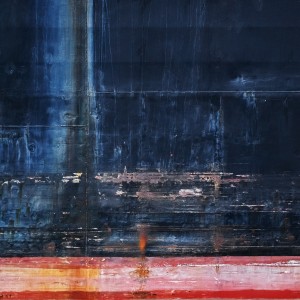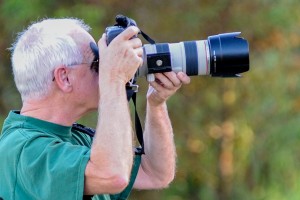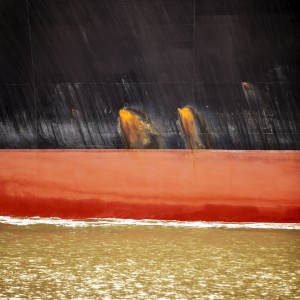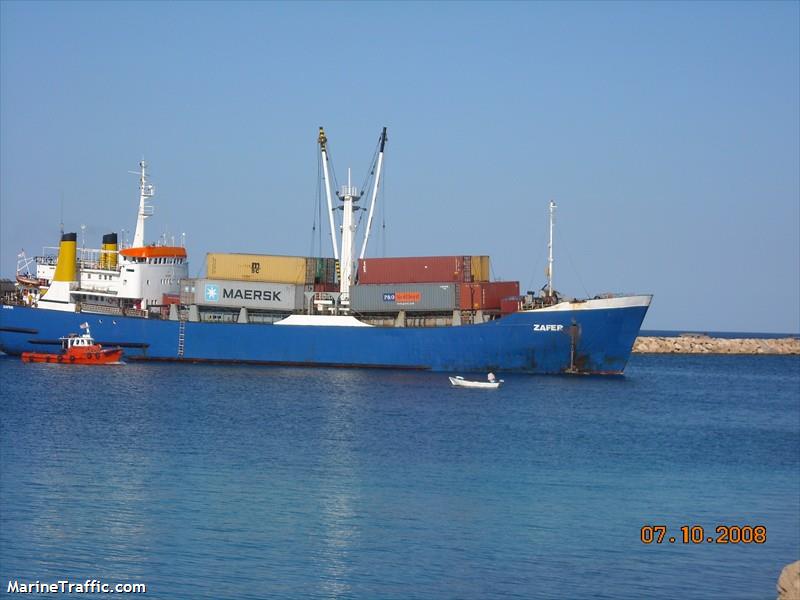An internationally renowned photographer, Dan Kaufman, with a unique body of work has found a way to use MarineTraffic to help him capture the perfect image.
US-based photographer Dan Kaufman has received international praise for his Rothko Series, which features photos of container vessels. And as Dan has revealed, he uses MarineTraffic to first scout his subjects, and then track them to ensure he captures the unique colours in the best possible light.
The photographer explained the process to us recently, revealing that he first views the Arrivals and Departures schedule of the Port of Savannah in the United States, before going to the vessel detail page to learn more about the ship. He then monitors the desired ship’s position and progress up or down the Savannah River channel.
“A new revelation to me regarding ship traffic is that they approach a port much like an airplane approaches its destination airport; they don’t just fly in and land. Actual landing permission is monitored and controlled and scheduled by air traffic controllers. In a similar manner, container ships approaching the Port of Savannah may be told by the Savannah Pilots to hold off Tybee Island until such-and-such before heading into and up the River channel to the Port. This is where MarineTraffic is very helpful for me. I can monitor the ship’s position and thus gage when it will be arriving at my shoot location,” Dan told us.
Dan says because photography is all about capturing the light, he needs to know where to be when the ship coming in and from what direction is the sun, and the colour of the sun, coming from. “It’s not like I can schedule a container ship like I might schedule a model for a fashion shoot,” Dan explained.
That is why the photographer has found MarineTraffic to be such a vital tool. “I couldn’t do it without MarineTraffic. To do my work, photograph the ships, I need to know what and when. What ship is coming, what it looks like, hull color, what is its age, which helps me predict things like hull condition, rust and layers of paint,, then where the ship is and when will it be at a desired shoot location, port or starboard to the direction and angle of the sun.”

Growing up in Southern California, Dan was fascinated by colours from an early age, and started photographing moving objects as soon as he picked up his first camera when he was just 12-years old.
“There was a German rangefinder camera priced at US$25—roughly US$200 today. My father struck a deal with me, if I came up with $13 he’d contribute the balance. So I went out and got a summer job delivering newspapers. It took me all summer to earn my $13 but I did and set out to become a photographer,” Dan said of his introduction to photography.

“I knew little, of course, to start with. Desire alone does not make one a photographer, but I had passion and that is often a key ingredient for success for all paths in life.”
Dan’s passion for photography was mirrored by his fascination for trains, the mammoth engines, the boxcars, flatcars, even the track. “I think this was the beginning of my fascination for industrial behemoths.”
Then following his acquisition of the German rangefinder Dan started photographing the trains. “But not from a safe distance from which a well-reasoned individual could discern a train in the picture, I would get as close as I could to the train, moving or not. When I was then lectured on how dangerous this was, I would simply explain that I wanted to capture the colours.”
That fascination with colour was enhanced one day when Dan’s mother Tricia took him to a Jackson Pollock exhibition at the Los Angeles County Museum of Art in 1965. “This was a seminal event in my lifelong career as an artist. I am often at a loss for words to describe what and how Jackson Pollock influenced me, except to say that my first experience of Pollock’s work was close to a spiritual awakening. It was his emotional angst that I felt more than the farrago of colors in his canvases.”

As Dan further explored the art scene he was drawn to the works of Wassily Kandinsky and many abstract expressionists including Mark Rothko, an artist that has heavily influenced Dan’s latest body of work, a series of photographs of ships.
“Mark Rothko was a Russian born artist who ultimately became known, famous, for a style called ‘colour field painting’. I was photographing one day from a barge in the Port of Savannah when I was interrupted by container ship within pitching distance. I reacted quickly and shot a burst of exposures as it passed by. Later while reviewing these shots I realised they resembled the ‘colour field’ style of Mark Rothko.”
Inspired by the experience Dan then began working on other similar shoots which he has called The Rothko Series, evolving from what he calls reaction shots in Series 1 to more deliberately planned photos in Series 2 and finally Series 3 during which Dan worked out a number of photographically technical aspects to achieve his vision. Dan says Series 4 is recursive, while Series 5 “picks up where Series 3 left off, but with the explicit inclusion of the meat of the matter; OMG these are container ships, they are immense, their silence is deafening.”
You can view the entire Rothko Series and much of his other work on Dan’s website.

 in the United States, before going to the vessel detail page to learn more about the ship. He then monitors the desired ship’s position and progress up or down the Savannah River channel.
in the United States, before going to the vessel detail page to learn more about the ship. He then monitors the desired ship’s position and progress up or down the Savannah River channel.